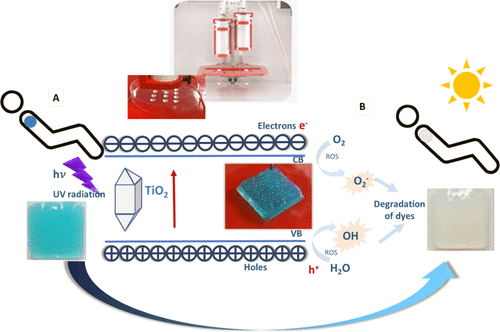Researchers from the New York-based Clarkson University have developed a custom bioink and deployed it to create a range of skin-compatible 3D printed biosensors.
The team’s novel ink design includes titanium nanoparticles that once exposed to UV radiation, initiate a photocatalytic reaction with colored dyes, causing the gel to change color. Utilizing their new mixture, the scientists have been able to 3D print skin-friendly biosensors, that enable users to minimize any damage caused by potential overexposure to the sun’s rays.
“We decided to explore the capabilities of 3D bioprinting to manufacture these wearable UV-responsive sensors, as 3D printers have become inexpensive and accessible,” said Silvana Andreescu, one of the paper’s authors. “When the [sensor’s] titanium is activated by UV light, like from the sun, the dye degrades and changes color, indicating exposure.”

Additive solutions to UV problems
According to the American Cancer Society, 1.7 million Americans are diagnosed with skin cancer each year, and melanoma is set to kill around 6,850 of these patients in 2020 alone. Consequently, monitoring the level of UV light that people are exposed to is now an important area of research, but it’s also a very difficult one, as UV radiation is intermittent in its behavior.
In order to fully understand the spatial and temporal variabilities of UV rays, the Clarkson team identified the need for a rapid and low-cost detection technology. Several methods such as 3D printing and injection molding were deemed viable, but the researchers chose the former due to its lower costs, customization options and overall accessibility.
What’s more, bioprinting is increasingly being used to create tissue constructs with biological functionalities, making it ideal for producing the team’s UV-activated biosensors. However, having selected their ideal production method, the team also found that a new biocompatible ink would be needed, to enable the continual safe skin-contact that would be required.

The Clarkson team’s reactive bioink
To make their biosensors possible, the scientists first had to create a novel bioink consisting of photoactive titanium dioxide (TiO2) nanoparticles and multicolored dyes, dispersed within a hydrogel. Alginate and gelatin were also added to the mix, to lend it the viscosity it needed for 3D printing, and a gel-like texture that would make it mechanically stable.
TiO2 was selected due to its photocatalytic abilities, which enable it to decompose organic materials via a series of reduction-oxidation chain reactions. In a scaled-down version of this mechanism, the team sought to initiate the decomposition of green, orange and blue-colored dyes in their sensor, once exposed to UV radiation.
After the scientists had optimized the design of their devices using CAD software, they leveraged an Allevi 2 3D bioprinter to fabricate a series of basic prototypes, then moved onto testing. To assess the mechanical stability and uniformity of their 3D printed devices, the team subjected them to nanoindentation along five different points.
Manufacturing on Demand
Results showed a low deviation in hardness between the models, indicating that they had strong mechanical properties, and reflecting a high distribution of TiO2 particles. During final product testing, the sensors also demonstrated a curious behavior: the differently-colored dyes degraded at varying rates to the same level of UV-exposure.
Based on their findings, the team concluded that their devices could be customized to the wearer’s skin sensitivity or melanin levels, to account for their individual skincare needs. Additionally, the scientists found that their sensors possessed the ability to indicate if a piece of clothing or a tool has been exposed to enough UV levels to be considered sanitized.
Either way, whether it be in a medical or sun care setting, the team deemed their bioink and biosensor to be a low-cost, accessible and customizable solution, that could prove to be a valuable platform for future research.
Body monitoring and additive biosensors
Researchers have developed a wide range of 3D printed biosensors in recent years that could potentially enable users to closely monitor their physical health.
Scientists from Sungkyunkwan University have produced a silicone elastomer with a sugar-based scaffold, that could be used as a basis for fabricating wearable medical biosensors. The devices proved to be highly sensitive to minute electrical signal changes under the skin, in the muscles, and in the brains of their volunteers.
A team from Washington State University (WSU) have leveraged 3D printing to create a glucose screening device for diabetic patients. The novel user-specific biosensors were able to be transferred to the skin and proved capable of fitting the curves of the human body.
Researchers from the CCDC Soldier Center, meanwhile, have fabricated biosensors that could be capable of physiologically tracking the wellbeing of U.S. troops. The microfluidic devices also have the potential to be applied in the field, as a means of protecting soldiers from situational threats.
The researchers’ findings are detailed in their paper titled “,” which was co-authored by Abraham Samuel Finny, Cindy Jiang, and Silvana Andreescu.
* This article is reprinted from 3D Printing Industry. If you are involved in infringement, please contact us to delete it.
Author: Paul Hanaphy

Leave A Comment